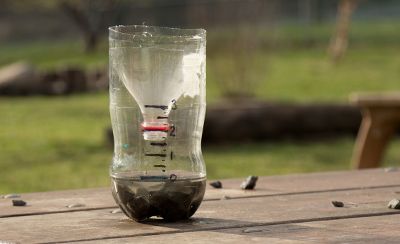Specialist Tips for Using a Rain Gauge to Monitor Local Weather Conditions
Specialist Tips for Using a Rain Gauge to Monitor Local Weather Conditions
Blog Article
Revealing the Science Behind Rainfall Determines: Exactly How These Tools Play an Essential Function in Climate Research Study and Environmental Surveillance
Rain gauges, apparently easy gadgets, hold an extensive importance in the realm of environment research and ecological monitoring. These humble instruments quietly gather among nature's most essential aspects-- rains. Behind their plain facade exists a complex scientific research that is essential for understanding the dynamics of our environment. As we peel back the layers of this clinical veil surrounding rainfall evaluates, we uncover a world where precision, data accuracy, and careful monitoring converge to introduce a much deeper understanding of our altering climate and its effect on the planet.
Importance of Rainfall Scales
Rain evaluates play a vital duty in tracking and measuring rainfall degrees, providing important information for environment research and evaluation. These tools are basic in measuring the amount of rains that happens in a specific location over a specific period. By collecting and gauging rain, rain determines offer beneficial understandings into the circulation and intensity of rainfall, aiding meteorologists, hydrologists, and climatologists in recognizing climate patterns and patterns.
Additionally, long-term information collected from rainfall evaluates helps in examining environment change influences and patterns, adding dramatically to clinical research study and decision-making procedures. In significance, rain assesses offer as essential devices in the area of weather forecasting and environmental scientific research, playing a vital duty in advancing our understanding of climate and environment characteristics.
Kinds Of Rain Gauges

Functionality and Procedure
In the world of climate research and atmospheric studies, the performance of rain determines hinge on their intricate performance and accurate functional mechanisms. Rainfall assesses are designed to properly determine the quantity of rainfall that tips over a details area throughout a set duration. These gadgets commonly include a channel that gathers rain and networks it into a gauging tube. The determining tube is noted with calibrated dimensions that permit the precise metrology of rains.
The functionality of rainfall determines is based on the principle of measuring and collecting rain in a standardized fashion. This collected information is critical for comprehending local weather condition patterns, tracking long-lasting environment fads, and assessing ecological influences. To visit this website ensure precise dimensions, rain determines demand to be tactically put in open areas far from blockages such as buildings or trees that could hinder the collection process.
The operational aspect of rain assesses involves routine maintenance to stop debris buildup, calibration checks to preserve measurement precision, and data taping for analysis (rain gauge). In general, the functionality and operation of rain assesses are crucial for collecting trusted rainfall information important to environment study and environmental monitoring
Role in Climate Research Study
Provided the crucial importance of accurate precipitation measurements in comprehending weather patterns and ecological impacts, the role of rain evaluates in environment study is indispensable. Rain evaluates give important data for environment research study by evaluating the amount of rainfall that tips over a certain area during a provided duration. This information is essential for checking long-lasting fads in rainfall patterns, assessing the influence of climate adjustment on rainfall distribution, and boosting environment models.

Environment researchers make use of data gathered from rainfall assesses to analyze variants in rainfall degrees, identify local climate fads, and examine the effectiveness of water source monitoring approaches. By contrasting historical rainfall data with present dimensions, scientists can find changes in rainfall patterns, such as adjustments in the frequency or intensity of rainfall events. This info is crucial for recognizing how climate change is affecting precipitation dynamics and can assist policymakers make educated choices pertaining to adaptation and reduction strategies.
Applications in Environmental Monitoring

In flooding forecasting, rainfall scale data assists to more track rainfall intensity and circulation, allowing authorities to provide prompt warnings and take essential actions to alleviate flooding dangers (rain gauge). Drought monitoring depends on rain gauge data to examine dampness degrees in the dirt and track precipitation deficiencies, assisting in the recognition of drought-prone areas and the execution of drought response techniques
In addition, rainfall scale data plays an important duty in water source management by giving details on water accessibility and use trends. This data is utilized to make educated decisions concerning water allocation, conservation my site steps, and lasting water resource planning. Additionally, in agriculture, rain scale data helps farmers in maximizing watering timetables, crop option, and overall farm management practices based on local precipitation patterns. On the whole, rainfall assesses are important devices in environmental monitoring, providing beneficial understandings that add to notified decision-making and sustainable source monitoring.
Conclusion
To conclude, rainfall determines are important devices for determining precipitation, giving useful information for climate research and ecological monitoring. With different kinds and performances, rain assesses play a crucial role in understanding precipitation patterns and their effect on the atmosphere. By accurately gauging rains, these devices add to the advancement of scientific knowledge and assistance in making notified decisions pertaining to water source management and catastrophe preparedness.
Rain evaluates play a crucial function in monitoring and determining rainfall levels, supplying essential information for climate research and analysis. The conventional rain scale, recognized as the "tipping pail" scale, is one of the most typically made use of tools. Ultrasonic rain assesses usage noise waves to spot the existence of rainfall, offering real-time data on precipitation levels.Environment researchers use data gathered from rainfall assesses to examine variations in rainfall degrees, identify regional climate patterns, and review the effectiveness of water source monitoring approaches.In final thought, rainfall assesses are necessary devices for measuring precipitation, providing useful information for environment research study and ecological monitoring.
Report this page